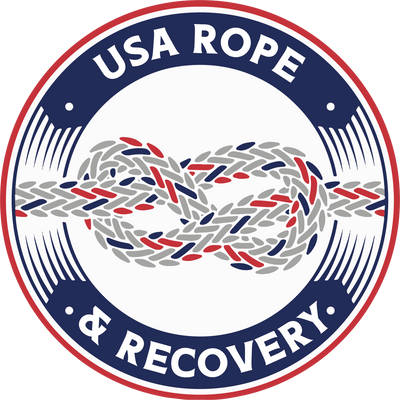When you need to cut rope—whether it’s marine cordage, industrial rigging, or outdoor utility line—the right knife can mean the difference between a clean, effortless cut and a frustrating, dangerous struggle. Not all knives are created equal, and rope can be surprisingly tough on blades.
In the photo above, you’ll see a HoneyBadger Knife, a brand trusted for its durability and performance. While many knife options exist, the principles below will help you choose the perfect rope-cutting tool for your needs.
What to Look For in a Rope-Cutting Knife
1. Blade Geometry
Your blade’s shape is the biggest factor in how efficiently it cuts rope:
-
Serrated blades – Bite into synthetic fibers and thick ropes with ease. Great for marine use.
-
Plain edge blades – Precise and clean, perfect for natural fiber ropes.
-
Hawkbill or sheepsfoot blades – Designed for controlled pull cuts and safety.
-
Drop point or clip point blades – Versatile, multipurpose cutting options.
2. Handle Ergonomics
Cutting rope often requires repeated force, so comfort and grip are critical:
-
Textured or rubberized grips prevent slipping, even when wet.
-
Contoured handles and finger grooves reduce hand fatigue.
-
Full tang construction ensures durability for heavy-duty cutting.
3. Sharpening & Edge Angles
A knife is only as good as its edge.
-
Serrated blades – 15–20° per side, sharpened with a serration tool.
-
Plain edges – 20–25° per side, balancing sharpness and toughness.
-
Hawkbill/sheepsfoot – 15–20° per side for aggressive slicing.
Keep your knife honed regularly to maintain effortless cuts.
4. Durability & Materials
Rope can quickly dull cheap blades. Choose steels that hold an edge and resist corrosion:
-
Stainless steels (VG-10, S30V, 154CM) – Excellent for wet or outdoor use.
-
High carbon steels (1095, CPM-3V) – Superior edge retention, but need rust care.
-
Tool steels (D2) – Extremely wear-resistant for synthetic ropes.
Locking mechanisms on folding knives are essential for safe, heavy cutting.
5. Length & Style
Size and design should fit your environment and usage:
-
Fixed blades (4–7 in.) – Strength and leverage for tough rope.
-
Folding knives (3–5 in.) – Everyday carry convenience.
-
Rescue/marine knives (5–6 in.) – Serrated edges that slice wet UHMWPE or Spectra quickly.
-
Dive knives – Rust-resistant with secure sheaths for underwater use.
Final Thoughts
The best knife for cutting rope is the one that balances blade shape, comfort, durability, and sharpness for your specific application. Whether you rely on a serrated rescue knife, a compact folding blade, or a full-sized fixed blade, keeping it sharp and properly maintained will make rope cutting fast, safe, and frustration-free.

